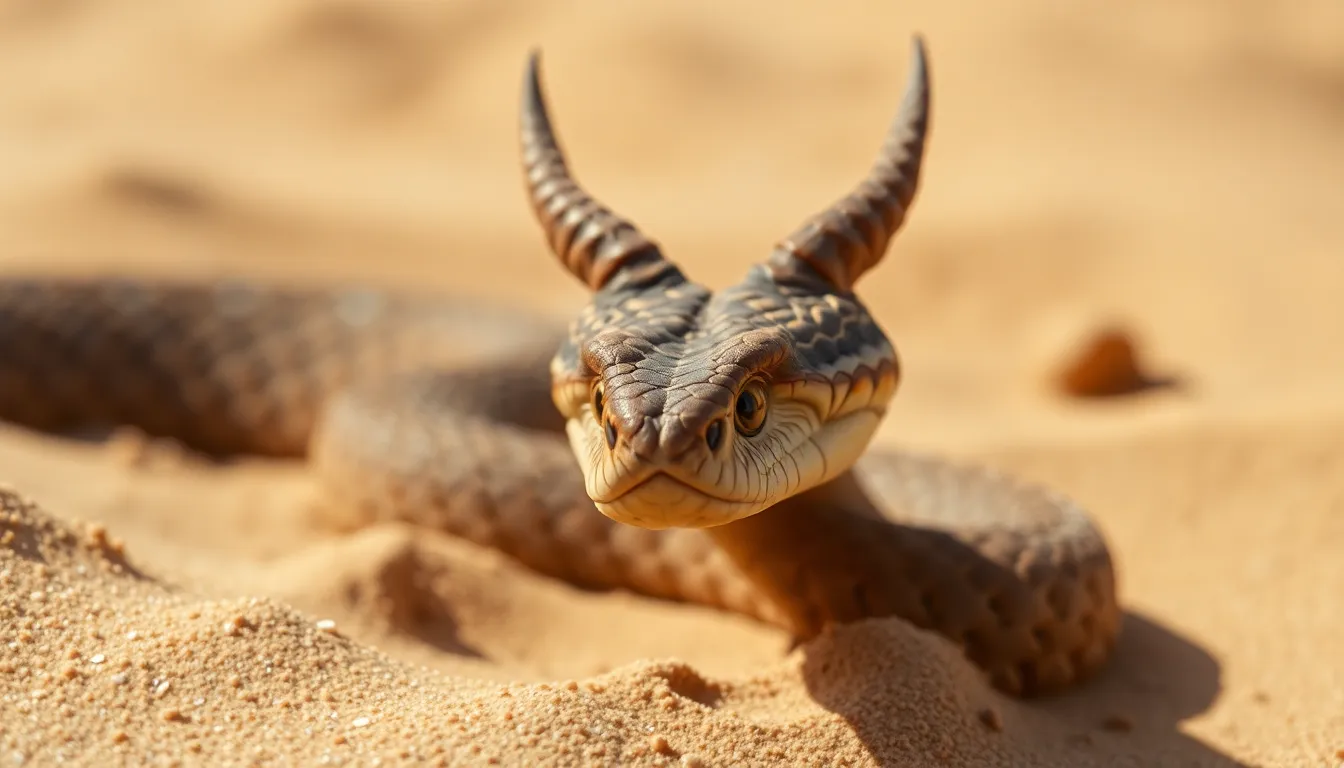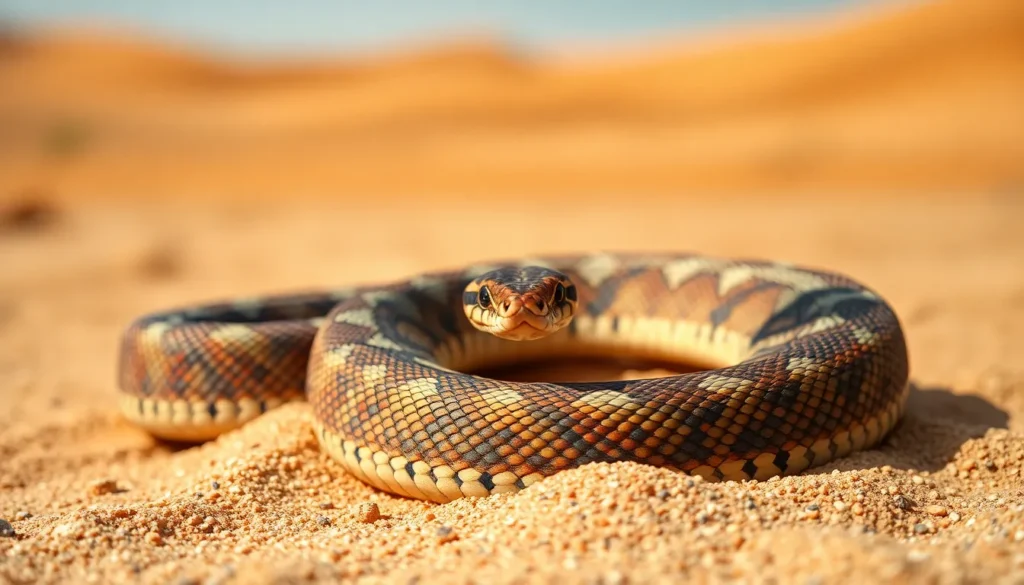When it comes to the wonders of ancient Egypt, one creature slithers its way into the spotlight: the asp. This three-letter serpent isn’t just a snake; it’s a symbol of power and mystery. With a reputation that could make even the bravest adventurer think twice, the asp has coiled its way through history, from Cleopatra’s infamous demise to its role in Egyptian mythology.
Table of Contents
ToggleOverview of Egyptian Snakes
Egyptian snakes represent a diverse group of species found across varied habitats in Egypt. The Nile Valley and the Sahara Desert house many of these snakes, each adapted to specific environmental conditions. Among them, the asp, also known as the Egyptian cobra (Naja haje), stands out for its historical significance and fearsome reputation.
Several species, such as the horned viper (Vipera ammodytes) and the sand boa (Eryx jaculus), inhabit the region as well. These snakes showcase unique adaptations, allowing them to thrive in arid environments. The horned viper uses its camouflage skills to remain undetected, while the sand boa employs constriction to immobilize prey.
Egyptian snakes contribute to their ecosystem through pest control, preying on rodents and other small animals. Experts highlight the ecological role that these snakes play, which goes beyond their famous associations with ancient mythology. Knowledge of the local snake species helps promote biodiversity awareness and conservation efforts.
Some snakes possess venom that poses a threat to humans, while others are non-venomous. Identification is crucial for safety, especially among locals and travelers. Careful observation and education can minimize the risk of encounters with venomous species.
In addition to their ecological significance, Egyptian snakes continue to fascinate researchers and enthusiasts alike. Ongoing studies provide insights into their behavior, physiology, and conservation needs. Understanding these snakes enhances appreciation for their role in Egyptian culture and history.
Characteristics of Egyptian Snakes

Egyptian snakes exhibit a diverse array of features and behaviors that allow them to thrive in their environments. Understanding these characteristics reveals their ecological significance and cultural importance.
Physical Appearance
Egyptian snakes vary significantly in size, coloring, and texture. The horned viper, for example, showcases distinctive protruding scales on its head, aiding in camouflage. Many species exhibit scales that range from smooth to keeled, providing different levels of protection. Coloration often includes earthy tones like browns and tans, adapted for blending into the desert landscape. Others, such as the Egyptian cobra, possess striking patterns and colors that serve both as warning signs to predators and for mating displays. Overall, these physical attributes reflect their adaptations to various habitats across Egypt.
Behavior and Habitats
Behaviorally, Egyptian snakes display important strategies for survival. Many species, such as the sand boa, remain burrowed in sand during the day, emerging at night to hunt. Other snakes are predominantly arboreal, making trees their primary hunting grounds. Their habitats cover a broad range, from the Nile Valley’s lush banks to the arid Sahara Desert. Some snakes, like the black mamba, prefer open areas while others thrive in dense foliage. Territoriality varies; certain species claim specific areas, while others roam widely in search of prey. Understanding these behaviors aids in recognizing their roles in the ecosystem.
Types of Egyptian Snakes
Egypt boasts a rich diversity of snake species, each adapted to its unique environment. Both common and rare species contribute to the ecological tapestry of the region.
Common Species
The Egyptian cobra features prominently among common snakes, recognizable by its hooded appearance and striking patterns. Another prevalent species is the horned viper, known for its distinctive horns and remarkable camouflage. The sand boa, a stout-bodied snake, burrows in sandy environments, showcasing its ability to thrive in harsh conditions. Additionally, the cat-eyed snake possesses excellent night vision, allowing it to hunt effectively after dark. Identifying these species enhances understanding of their habitats and ecological roles in the Nile Valley and Sahara Desert.
Rare Species
Among the rare Egyptian snakes, the African rock python stands out due to its considerable size and elusive behavior. Additionally, the black mamba, though more frequently associated with sub-Saharan Africa, can occasionally wander into Egypt’s borders. The egyptian asp, steeped in mythology and history, also adds to this category’s intrigue. Another rare find is the desert horned viper, distinct from its common counterpart with specialized adaptations for arid habitats. Observing these elusive species fosters appreciation for Egypt’s unique serpentine biodiversity.
Importance in the Ecosystem
Egyptian snakes serve crucial roles within their ecosystems, directly impacting biodiversity. They contribute significantly to pest control by preying on rodents and insects, helping to maintain ecological balance. Various species, like the Egyptian cobra and sand boa, adapt strategies to hunt effectively within different environments.
Predators keep prey populations in check, thereby preventing overpopulation and possible disease spread. The presence of snakes in the Nile Valley and Sahara indicates healthy ecosystems, as they are often indicators of environmental well-being.
Specific species also participate in nutrient cycling by consuming carrion and decomposing matter. This process enriches the soil, promoting plant growth and benefiting other organisms in the food web. Additionally, certain snakes create habitats for smaller creatures using their burrows or sheds, which foster further biodiversity.
Interactions among species illustrate ecological relationships, with snakes as both predator and prey. Birds of prey, for instance, depend on snakes as a food source, while larger mammals may consume them, forming part of a larger food chain.
Research indicates ongoing assessments of their ecological roles reveal even more about their significance. Various studies highlight how the extinction of snake species could lead to imbalances, resulting in increased pest populations. Understanding their behavior and habitats informs conservation efforts, vital for preserving these natural ecosystems.
Overall, Egyptian snakes contribute immensely to maintaining balance in their habitats, showcasing the importance of biodiversity within the region’s ecology.
The asp and its fellow snakes in Egypt represent a fascinating blend of ecological importance and cultural significance. Their roles in maintaining balance within ecosystems highlight the need for ongoing conservation efforts. As research continues to uncover more about these reptiles, their unique adaptations and behaviors reveal the intricate relationships they share with their environments.
Understanding the diverse snake species enriches appreciation for Egypt’s natural heritage. The preservation of these creatures is crucial not only for ecological stability but also for honoring the rich history intertwined with these enigmatic reptiles.




